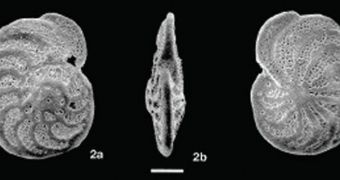Tiny aquatic creatures, no larger than a grain of sand, can yield significant details of past climate changes, as long as scientists know what they are looking for. Billions of these tiny organisms can be found on the bottom of the ocean, and they hold inside them information about past sea levels, temperatures, and ocean conditions, on a planet fairly different from the one we know today.
The complex shells of calcium carbonate, also known by their scientific name of foraminifera, can yield knowledge spanning more than 250 million years into Earth's past, says Miriam Katz, who is an assistant professor of Earth and Environmental Sciences at the Rensselaer Polytechnic Institute (RPI). She has spent more than 20 years investigating these fossils, in order to create one of the most accurate maps of the climate changes that took place on the planet over the last epoch. Her study spans periods of global cooling, as well as times when greenhouse gases were the dominant ones in the atmosphere.
The documents Katz put together are a clear indicator of how, when and why oxygen, carbon and faunal levels increased and decreased over recent geological history. Her work holds considerable implications today as well, as it can provide helpful clues to mitigating the human-induced global warming and climate change we see today, geologists say. During her research, Katz spent two full years at sea, in seven oceanic expeditions that ensured she had the most varied study materials at her disposal.
“There is a saying among scientists in my field that 'the past is a window on the future'. By reconstructing the climates of the past, particularly those where we see massive and rapid changes in the climate, we can provide a science-based means to explore or predict possible system responses to the current climate change,” the scientist states, quoted by ScienceDaily.
“Some species are only found in certain environments, such as in warm water or in shallow, tidal areas. By piecing together the species assemblages that are found in a given area during the given time period, we can reconstruct the sea level and ocean and climate conditions of that period based on our knowledge of each foraminiferal species,” she concludes.

 14 DAY TRIAL //
14 DAY TRIAL //